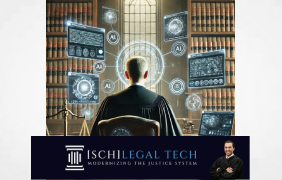There’s a palpable sense of optimism today among those of us in the judicial and public service sectors. Recent announcements by Microsoft and OpenAI have ushered in government-specific AI products—Microsoft 365 Copilot GCC and ChatGPT Gov—that promise to transform how courts and other institutions handle sensitive data and streamline operations. With robust security features built into these platforms, there is growing confidence that courts may be able to begin adopting generative AI in earnest. Government-Level AI Products: A New Dawn Microsoft has rolled out Microsoft 365 Copilot GCC, a tailored version of its Copilot suite designed for government entities. This product integrates advanced generative AI capabilities into everyday productivity tools like Word, Excel, Teams, and Outlook, and is deployed on the secure Microsoft Azure Government cloud. Key security features include adherence to stringent compliance standards such as FedRAMP High, ensuring that sensitive data is handled in a controlled environment. This isn’t just another tech rollout. As a judge who has long advocated for technological modernization, I see this as a potential turning point. Consider the everyday challenges courts face: mountains of documents to review, repetitive orders to draft, opinions to get out and complex calendars to manage. Copilot GCC could transform these tasks, allowing judges and court staff to focus on the aspects of their work that truly require human judgment and empathy. Similarly, OpenAI’s ChatGPT Gov offers a government-focused variant of ChatGPT designed to operate on agencies’ own Azure cloud servers, whether on Azure Commercial or Azure Government cloud. This could provide the necessary data governance and control required by public institutions while opening up new possibilities for innovation in court operations. Cloud Storage: A Parallel Evolution This transformation in AI adoption mirrors the historical evolution of cloud storage in the legal system. I remember when courts depended solely on on-premises servers, hesitant to move to the cloud due to security concerns. Over time, as cloud-based solutions matured and demonstrated robust security, courts made the transition, unlocking benefits like scalability and enhanced accessibility. The parallel is striking. Just as courts now trust off-premises cloud storage for their critical data, they are beginning to see that with proper safeguards, generative AI may be able to be securely integrated into their workflows. The key difference is that we’re now better prepared to make this transition, having learned valuable lessons from our cloud adoption journey. The Path Forward The path to implementing these tools requires careful consideration and planning. Courts should: 1. Start with low-risk, high-impact applications 2. Develop clear policies about AI usage and data handling 3. Provide comprehensive training for judges and staff; and 4. Establish monitoring and evaluation protocols Moreover, as the market continues to evolve, other companies such as Anthropic and X will likely launch their own government-focused AI tools, further expanding the options available to courts. And with Apple beginning to roll out intelligence writing tools within its ecosystem, the landscape is set for a diverse range of solutions—each with its own strengths and considerations. Looking Ahead While nothing is completely infallible and vigilance remains essential, these developments mark an important turning point. The question is no longer whether courts will adopt AI, but how they will do so most effectively. As someone who has experienced firsthand the challenges of modernizing court operations, I believe we’re entering an era where technology can truly enhance our ability to deliver justice efficiently and fairly. Conclusion The recent product rollouts from Microsoft and OpenAI herald a new era where courts and public institutions may now have viable, secure options for adopting generative AI. With products like Microsoft 365 Copilot GCC and ChatGPT Gov offering robust security features and flexible deployment models, the future of AI in the judiciary looks promising. Much like the journey from on-premises to cloud-based storage, courts are now poised to benefit from the efficiencies and innovations of generative AI—ushering in a smarter, more efficient era in public service. The key will be maintaining our commitment to justice and due process while embracing these powerful new tools. For those of us in the judiciary, this is an exciting time. We have the opportunity to shape how these technologies are implemented in ways that truly serve the cause of justice. Let’s approach this opportunity with optimism, wisdom, and a clear vision for how technology can enhance, rather than replace, the human elements that are essential to our justice system. For more posts like this, visit JudgeSchlegel.com. |






